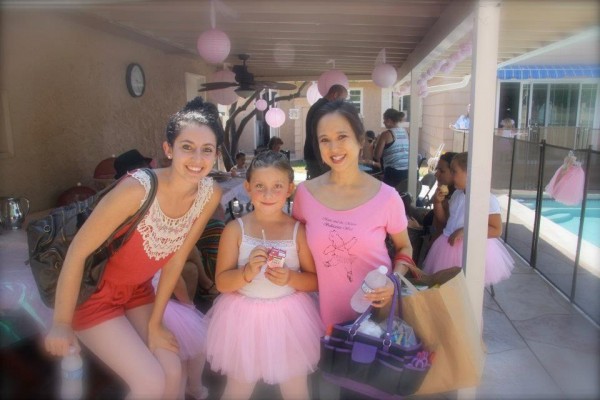Ballet on the Spectrum Gives Autistic Children a Chance to Dance


Located on West Lewis Street in picturesque Mission Hills, Music and the Mirror Balletcenter West has offered ballet classes for three year-olds through adults since 1997. Director and owner Michelle Bartolomei is esteemed throughout the neighborhood for her excellent instructing techniques and her ability to teach any person at any age the art of dance. In 2011 Michelle proved the extent of her abilities and dedication when she added Ballet on the Spectrum, a ballet class for those with autism, to the classes she offers.
Michelle’s boutique-styled studio offers children and adults dance programs to increase technical ballet skill and stamina; with an emphasis on developing technique, placement, and style. The studio welcomes young students who aspire to be dancers and has had alumni of the program accepted into the prestigious academies of School of American Ballet, American Ballet Theatre, Miami City Ballet, Pacific Northwest Ballet, JKO School, Washington Ballet, Houston Ballet, Joffrey Ballet, Manhattan Young Ballet , and others. Along with the dedication to train professional dancers, the studio acknowledges that not every student is pursuing a career in dance. But, each class demands concentration and discipline from all students to teach them qualities that will serve them throughout their lives.
Since Ballet on the Spectrum began, Music and the Mirror Balletcenter West has offered a new kind of program focused on engaging those diagnosed with autism. After Michelle’s daughter was diagnosed, she decided to reach out to others with children of similar mental and physical variations.
“I have taught children for 25 years. When my daughter was diagnosed with autism, my goal was to have her be able to enjoy the beauty and benefits of ballet that I have shared with others. I have designed a class which enables her and others like her to open their minds and their hearts through the grace and expression of dancing.”
The program is offered to children from ages 4 and up, and encourages autistic dancers to have fun and exercise with music and movement. BOTS uses teaching techniques Michelle developed through her years of experience with special education classes. The techniques are geared toward improving each student’s gross motor skills and enhancing their nonverbal expression. The program also uses the help of volunteers, mostly teen-age students enrolled at the studio, to facilitate the classes and serve as “shadows” for each child.
The director recalls that the highlight of the BOTS program was the annual summer recital in which the children were able to experience the joy of performing before an audience. During their performance the house lights were turned up, the stage lights were turned down, and the music was quieted to accommodate their more sensitive sensory perceptions. By the end of the piece, Michelle explains, “The audience, as well as the dancers backstage, were in tears. It was truly a joyful experience!”


